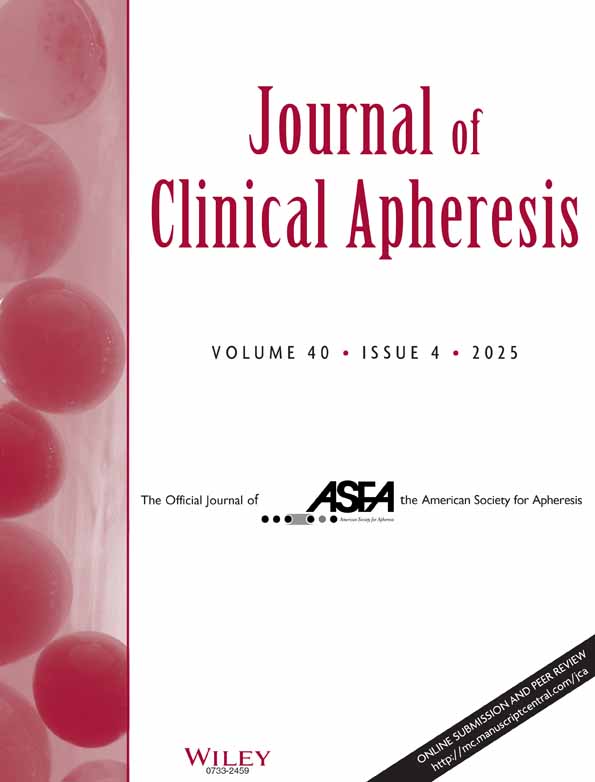Study of coagulation factor activities in apheresed thawed fresh frozen plasma at 1–6°C for five days †
This work was presented as an abstract at the 26th annual meeting of the American Society for Apheresis, Chicago, IL, April 27–30, 2005.
Abstract
The concern for the loss of activities of coagulation factors in thawed fresh frozen plasma kept at 1–6°C for long periods has prevented transfusion services from using thawed plasma beyond 24 hours of storage. There is no mention of the method of collection of the plasma and/or the study of the bacterial growth in the studies reported in the literature. The present project was undertaken to investigate coagulation factor activities and bacterial growth in apheresed fresh plasma. Twenty apheresed plasma units from different blood groups were used. After the 24-hour expiration time of the thawed plasma kept at 1–6°C, aliquots were taken at day 1, day 3, and day 5 of expiration time and were immediately frozen at −70°C. Samples were assayed for activities of coagulation factors II, V, VII, VIII, X, XI, and fibrinogen (Fib). Our study reveals no statistically significant change in activities of coagulation factors II, VII, X, XI, and fibrinogen from day 1 to day 5 storage of plasma at 1–6°C; however, there is a mean decrease of 8.8 and 14.3% in activities of factors V and VIII, respectively. All culture samples taken on day 5 storage were negative at 7 days. In conclusion, our results do not show a significant change in the activity of most coagulation factors in the thawed apheresis plasma stored at 1–6°C over a 5-day period. Hence, it is feasible to transfuse the plasma beyond the 24-hour period without compromising the clinical outcome of patients with coagulopathy. J. Clin. Apheresis 2006. © 2006 Wiley-Liss, Inc.




